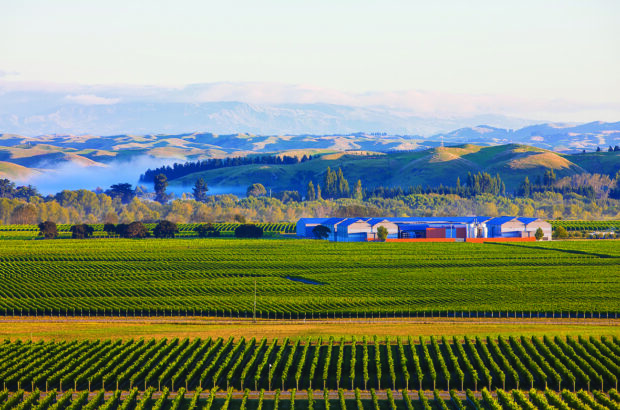One of Australia’s most renowned sommeliers, Louella Mathews is currently group sommelier of Trippas White Group, and has previous experience in fine-dining institutions such as Rockpool 1989 and Rockpool Bar & Grill. She is also a wine consultant, writer, judge, event host and influencer (@louthesomm). Mathews won the Australia’s Wine List of the Year 2020 Sommeliers’ Choice Award (for bibo wine bar) and was nominated for Young Sommelier of the Year in 2016.
When I was training as a sommelier, my superiors loved to test me on alternate names for different grape varieties (Tempranillo being particularly tricky, as there are so many!). This was my first glimpse into Mourvèdre. Of course, they asked me the two synonyms for Mataro – as it’s known here in Australia. Most famously from the Barossa Valley, usually blended with Grenache and Shiraz.
Why do I love Mourvèdre so much? As a sommelier, it has massive appeal; like Grenache, it can be something of a chameleon, showcasing different flavour profiles depending on climate and winemaker – and providing myriad food-matching possibilities.
Mourvèdre, its name in the Rhône valley, is most famously one of the permitted varieties in Châteauneuf-du-Pape. It is usually blended here with Grenache, Syrah and sometimes up to 10 other friends. I find in these blends the Grenache usually dominates, with dried cranberries and cherries, while Mourvèdre’s role is to lend structure and savoury notes, while enhancing ageability. The obvious stylistic exception is Château de Beaucastel, which uses a high portion of Mourvèdre and is known for its structure and power. I love to pair this with a rich seafood paella.
Travel further south in France to Provence, and you’ll find the grape used in high-quality rosés that (deservedly) command high prices – Domaine Tempier is one of the most iconic. The grape is also used in Provence to make reds with backbone, density, the ability to age and a rustic, wild nature to them. Lavender, herbes de Provence, terracotta clay and squid ink are typical aromas and flavours. Heavenly with a lamb and rosemary roast.
For more affordable options, head to Languedoc-Roussillon or even further into Spain. Monastrell – the Spanish version of the grape, hailing from Yecla or Jumilla – is another great standalone expression and perfect for those who like their wine with bolder blueberries and boysenberries, a silky-supple palate and fuller of body. I tend to drink these wines when first released as they are from warmer, arid, continental climates. Finca Bacara’s Time Waits for No One from Jumilla (via Hallgarten Wines in the UK) is a great example of this style, and a surprisingly good match for a refreshing beetroot, rocket and goat’s curd salad.
More leftfield when it comes to Mourvèdre is the USA. The most famous producer of the grape here is Bonny Doon, from the San Francisco Bay region in California. Known for its playful labels and equally playful wines, it has a unique expression of Mourvèdre and blends featuring the variety; all are great with grilled rump steak with peppercorns.
Lastly, my own home country, Australia. Over the last decade we have seen a surge in varietal examples. Championing the bigger, bolder styles, Travis Earth and Torbreck offer Barossa must-trys, while Syrahmi from Heathcote makes a lighter style.
Discover Mourvèdre: Mathews’ two to try
The Somm & the Winemaker, Mourvèdre, New South Wales, Australia 2022 is a collaboration between myself and childhood friend/winemaker Nadja Wallington of ChaLou Wines (@thesommandthewinemaker). It’s made with a light touch, using whole berry and whole bunch fermentation to make an aromatic, medium-bodied style with flavours of mulberry, cloves and a juicy moreish mid-palate. It really is the ultimate pizza wine – pepperoni topping preferred.

The red Domaine du Gros’Noré, Bandol, Provence, France 2018 (gros-nore.com) is a great example of the backbone that Mourvèdre provides. From old vines grown on rich clay soils, the wine has a rustic flair, with a dash of Grenache, Carignan and Cinsault to soften, flesh and refresh the palate. Delicious now, but also built to age.













